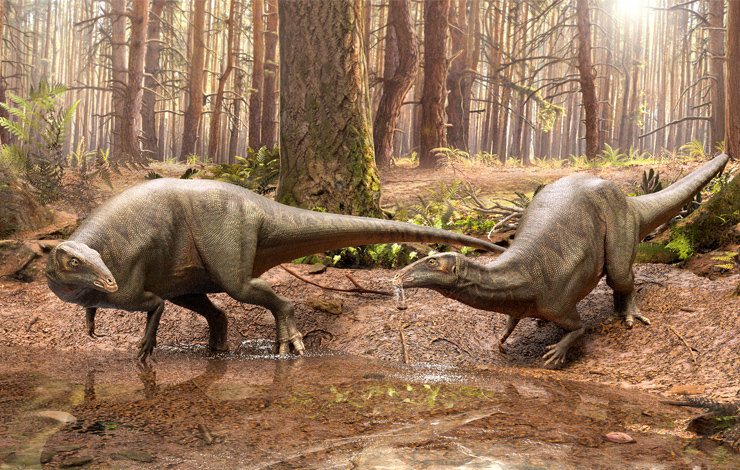25-02-2022

Figure: Life restoration of Draconyx loureiroi, in the environment represented by Lourinhã Formation. Illustration by Victor Carvalho, used under CC BY NC 4.0.
Researchers at NOVA School of Science and Technology and Lourinhã Museum studied new material from the Draconyx dinosaur from Lourinhã, which proved to be presumably the most complete hand of this type of Jurassic animal in Europe.
After 20 years, Carlos Anunciação, the original explorer of the specimen, kindly donated additional material from this species to the Lourinhã Museum, which allowed a new look at the dinosaur. “When I saw the material for the first time, I immediately understood that we needed to get a better look at the Draconyx specimen, which had not been studied for 20 years”, explains Filippo Maria Rotatori, one of the researchers involved in this work.
Thanks to the “Horácio Mateus Scientific Research Incentive Program” awarded by the Lourinhã Museum, it was possible to prepare the new bones and restore the old ones, and carry out the research that has now been published in the prestigious Zoological Journal of the Linnean Society.
The new findings lead the scientists to conclude that the anatomy of the fore and hind limb are the one of a bipedal, agile animal, which used the hands for grasping the food that it was eating. This fact was a surprise, since its closest relatives are large sized animals, which were able to walk on four legs at occurrence thanks to a modified hand structure.
The study was coordinated by Miguel Moreno-Azanza and Octávio Mateus, both researchers at FCT NOVA and Lourinhã Museum.
This finding also highlights the pivotal role of volunteers and external collaborators, such as Carlos Anunciação, in supporting institutions in research activities. Like the Draconyx loureiroi, other important specimens were found by Carlos and people like him, who in a virtuous synergy with scientific institutions help to increase and defend the national heritage. The holotype of Draconyx loureiroi can be visited at Dinoparque Lourinhã.